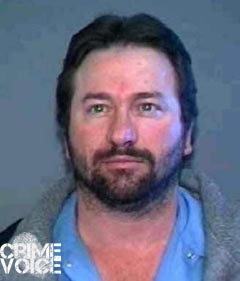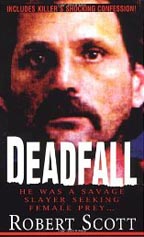25 Year old murder investigation closed
MENDOCINO COUNTY – The Sheriffs Office has announced the resolution of a homicide case from 1988. The murderer has been identified as Robert James Parks. No arrest will be made however, as Parks died in 1998 of an apparent suicide.

Georgina Pacheco, the 1988 murder victim
The story begins on September 10 of 1988, when a man walking his dog down Pearl Ranch Road in Fort Bragg. The dog became agitated or excited and led the man, Rodney Elam, to an area of thick brush just off of the roadway. It was there he discovered a deceased naked young woman hidden in the plants. He immediately called the Sheriff, and soon detectives were on the scene. They discovered the young woman with blunt force injuries to her head, and an orange and black nylon rope wrapped tightly around her neck. It was apparent that she have been killed in another location and brought to the roadside and hidden from view.
The victim was soon identified as 20-year-old Georgina Fatima Pacheco. She had been reported missing seven days before on September 4th, and was last seen on September 1st, when she was picked up from the Sea Pal Restaurant where she worked, by Parks. An autopsy performed on her determined the cause of death to be both strangulation and blunt force trauma, which appeared to come from a tire iron, or even an abalone pry bar. A sexual assault examination was also made, which included taking swabs of bodily fluids and fingernail clippings. A blood type could be determined, but in 1988 it was not possible to identify people based on DNA.

Robert Parks was identified as the final suspect 25 years later
Robert James Parks was a Fort Bragg Resident who owned property within two miles of the scene, and worked as a fisherman. According to a 2009 story by Bruce Anderson and published in the Anderson Valley Advertiser Online (theava.com), Parks was the estranged husband of one of Georgina’s sisters. The story shows Parks as a widely disliked person who nearly killed one man after he was caught stealing fishing gear. Anderson relates that the people who suspected Parks in the killing believed he did it in revenge for his being rejected by her sister. (The story also reports that Parks himself was shot to death on a boat in Morro Bay, in contrast to the Sheriff’s report that he committed suicide in Long Beach Harbor. A later update by Anderson agrees with the Sheriff’s report, however.)
In contrast to the dark picture of Parks, Georgina Pacheco is described in Anderson’s story as well-like, energetic and chipper, always employed, but also trying to break away from the traditional upbringing of her old-world Portuguese parents. She had been associating with young men and drug users, and was reported to hang out in the parking lot of the old Sprouse-Reitz store on Main Street, “where the bad boys and the drugs were.”
While in hindsight, it may seem obvious that Robert Parks was the killer. He was the last one seen with her, and with his hostile family connections and reputation for violence, but it was not so clear at the time. Pacheco’s multiple connections with drugs and drug users, and her reported methamphetamine use, connected her to potential suspects in many ways, including former boyfriends. And no conclusive physical evidence was ever available. But the presence of one man may have further colored the case, and led to speculation about Georgina’s killer.
John Annibel was a suspected serial killer, and he lived in Fort Bragg from 1984 to 1998. He was convicted of the 1998 murder of Debbie Sloan, a divorced mother of two whom he met in a bar. He confessed to the murder and is now serving time in state prison. According to Anderson’s story, he was also suspected, but never prosecuted, for four other murders in Humboldt county. Annibel lived near Pacheco, apparently associated with the same crowd, and was a meth user. But he was also a husband and father at the time, working at a lumber mill. A comment posted on Anderson’s story is purported to be from Annibel’s daughter, who stated that he was a good father, who provided for his family, but succumbed to drugs.

The story of killer John Annibel is told in "Deadfall" by Robert Scott
For 25 years, the case of Georgina Pacheco was officially unsolved, with those concerned speculating about Parks, Annibel, and numerous other connected individuals. In 1998, before Annibel’s murder conviction, Robert Parks called a family member to tell them he was committing suicide by sinking his boat in Long Beach Harbor. Harbor police were contacted, and on July 21st, he was found dead on his sunken fishing vessel. These two events narrowed most remaining speculation to these two men. However, the official investigation remained open, and in early 2000, with DNA evidence becoming an available tool, Detective Kevin Bailey submitted some of the autopsy evidence to the Department of Justice.
Due to the backlog of cases, it took until 2005 for the DOJ lab to report that the sample recovered was semen, but the profile was limited to only exclude certain suspects, but not enough to positively identify anyone. In 2009 the case was assigned to Detective Andrew Porter, who then arranged for the original source swabs, along with the fingernail clippings, to the DNA lab. Though most of the evidence had been consumed in earlier tests, the lab was able to retrieve a complete DNA profile using the wooden sticks that held the cotton swabs. DOJ Senior Criminalist Meghan Mannion-Grey also extracted a partial profile from samples from Pacheco’s hands, and from the fingernail clippings, which matched the other one.
The investigation continued to Robert Parks, but since he had died 15 years ago, his DNA was not directly available. However, Detective Porter obtained samples from his family members, and Mannion-Grey was able to positively identify Parks as the contributor of both blood and semen found on the victim. Based on this, the Sheriff’s Office has officially listed Parks as the only suspect, and closed the case.
Read More:
The AVA.com: The Cold Case Desk by Bruce Anderson
SFGate: DNA solves 1988 kiling near Fort Bragg
Amzon.com: Deadfall by Robert Scott – the story of John Annibel















